In this series on traditional Catholic shrines, likely to encompass a few dozen posts, I will attempt to share experiences (along with photos and useful info) from recent visits to various Catholic sanctuaries and holy places in southern Europe.
The first reports will cover shrines and pilgrimage places throughout Italy; Spain and Portugal will follow later.
Comments and questions are always welcomed and appreciated.
Milan
Having visited Milan (and many of the places covered in later posts) in the past, my recent travels were aimed specifically at visits to shrines, tombs of saints and other Catholic sites. It is these that will be the focus of my posts. There are plentiful sources for general tourist information, history and sightseeing tips, which will therefore be omitted here.
—
Milan, capital of Lombardy and a city of about 1.3 million inhabitants, is a business hub, fashion mecca and, with its rich history and sights, a popular tourist destination. The reasons it landed on my itinerary, however, were St. Ambrose and St. Charles Borromeo… or more precisely, their tombs. The city also served as a convenient base for a day trip to Pavia (the resting place of St. Augustine) and Bosco Marengo (native village of Pope St. Pius V) – which were among the highlights of my European travels. More on that in another post…
St. Ambrose
Basilica di Sant’Ambrogio (Piazza Sant’Ambrogio 15; Mo-Sat 10-12/2:30-6pm, Sun 3-5pm; www.basilicasantambrogio.it)
St. Ambrose, the holy bishop of Milan, one of the most important figures of early Christianity (and one of the four Latin Doctors of the Church), is buried in the basilica bearing his name. The original church was consecrated by Ambrose himself (in 386 AD) and was later rebuilt in the 11th century. The body of the saint (well preserved skeletal remains dressed in episcopal robes) is on display in the crypt, together with the remains of the martyrs St. Gervasius and St. Protasius.
Ambrose’s sister and fellow saint Marcellina, who gave herself to the Church as a consecrated virgin, is also buried at the basilica. The remains of his brother, St. Satyrus, are here as well.
The golden altar, dating back to the 9th century, depicts the lives of Christ and of St. Ambrose. The magnificent 4th century Sarcophagus of Stilichone, carved with biblical motives, is one of the few pieces preserved from St. Ambroses’s original basilica – a masterful example of early Christian art.
St. Ambrose was born in 339 to a wealthy and noble Christian family (his father was the Pretorian Prefect of Gaul), became a lawyer and later provincial governor with residence in Milan. When the (Arian) bishop of Milan died in 373, disagreement broke out between the Arian heretics and the Catholics as to the election of a new bishop. A child’s voice was suddenly heard crying out “Ambrose, bishop”, and both sides immediately agreed upon this divinely inspired appointment.
Ambrose, initially refusing to accept the post, ended up consenting to the Will of God and within a week was baptized, ordained and consecrated bishop of Milan. He gave his money and lands to the Church and the poor, adopted an ascetic lifestyle with much fasting, mortification and fervent prayer, and gave himself to diligent studies to prepare for the difficult task ahead.
The holy bishop dedicated the rest of his life chiefly to fighting the Arian heresy that had caused apostasy of a large portion of bishops, priests, religious, nobles and some of the emperors. Empress Justina, an Arian, desired to oust Ambrose; she demanded him to turn one of Milan’s churches over to the Emperor for Arian use. Ambrose refused, saying: “If you demand my person, I am ready to submit: carry me to prison or to death, I will not resist; but I will never betray the church of Christ. I will not call upon the people to succour me; I will die at the foot of the altar rather than desert it.”
Justina and her teenage son Emperor Valentinian II then drew up an imperial law granting freedom for public worship to Arians (same as to Catholics), threatening anyone who would oppose the law with capital punishment. [I include the following anecdote to show the sad contrast between Christians then and today… The head of the recording office, Benevolus, when ordered to have the law promulgated, “tore off his belt, his badge of office, and flung it at the feet of the Empress with the words ‘Dismiss me from my post, but leave me the integrity of my faith’ “. His Arian replacement then went ahead and promulgated the law.]
Bishop Ambrose defied the law and was ordered to leave Milan, which he refused to do: “I cannot think of abandoning the Church, for I fear the Lord of the Universe more than any earthly Emperor. If the Emperor acts as sovereigns are wont to act, I am prepared to suffer what bishops are wont to suffer!” Ambrose then spent several days and nights barricaded inside his basilica, protected by the faithful ready to die with their bishop, while armed imperial troops were waiting outside to arrest him. In the end the bishop prevailed and the Emperor gave in.
St. Ambrose, through his influence on emperors, was also instrumental in overthrowing (by then still widespread) paganism and having Christianity replace it as the official religion of the Empire.
One of the most famous scenes of St. Ambrose’s life is his confrontation with Emperor Theodosius when the latter’s command ended in a massacre of 7000 people in Thessalonica. Ambrose openly threatened the Emperor (whose faith and loyalty to the Church were not in doubt) with excommunication and forbade him to receive Holy Communion until he had done sufficient public penance. Only after several months of penance did Ambrose let Theodosius receive the Sacrament. This event – the monarch humbly submitting to a Church authority he publicly acknowledged to be higher than his own – marked the start of a new relationship between the Church and State.
St. Ambrose died in 397, having served as bishop of Milan for 23 years. Although he is best remembered for having brought about the decline of the Arian heresy in the western Church, and strengthening the authority of the Church, he also left a large volume of works, sermons, letters and hymns, including influential texts about the virgin birth and perpetual virginity of Mary, and her role as the Mother of God. The hymn Te Deum has traditionally been ascribed to St. Ambrose (composed on occasion of his baptism of the great St. Augustine – his most famous convert). The Ambrosian Rite (different from the Roman Rite and still occasionally used in the Archdiocese of Milan) is named after the saint.
Saint Ambrose: His Life and Times (biography by A. Paredi; free download)
St. Ambrose: His Life, Times and Teaching (biography by R. Thornton; free download)
Ambrose: Selected Works and Letters (Nicene and Post-Nicene Fathers, P. Schaff; free)
Let us pray to St. Ambrose – the epitome of a holy and fearless shepherd – that, through his example of integrity, strength of character, courage and willingness to lay down his life in defense of God, the Faith and the Church, he may bring our modern prelates and clergy to recognize and embrace their duty to labor for the glory of God and salvation of souls.
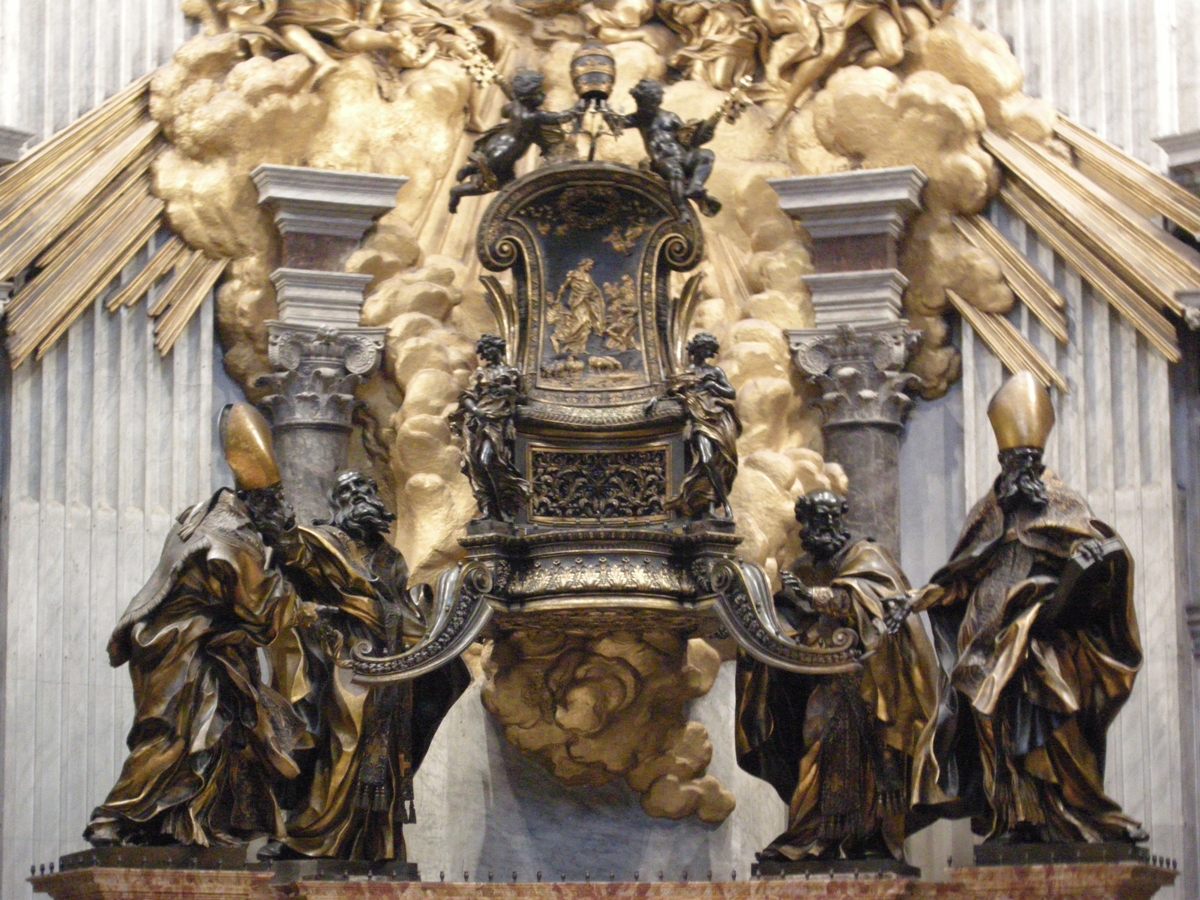
St. Ambrose, along with three other Doctors of the Church – St. Athanasius, St. John Chrysostom and St. Augustine – upholding the chair of Peter at St. Peter’s Basilica in Rome.

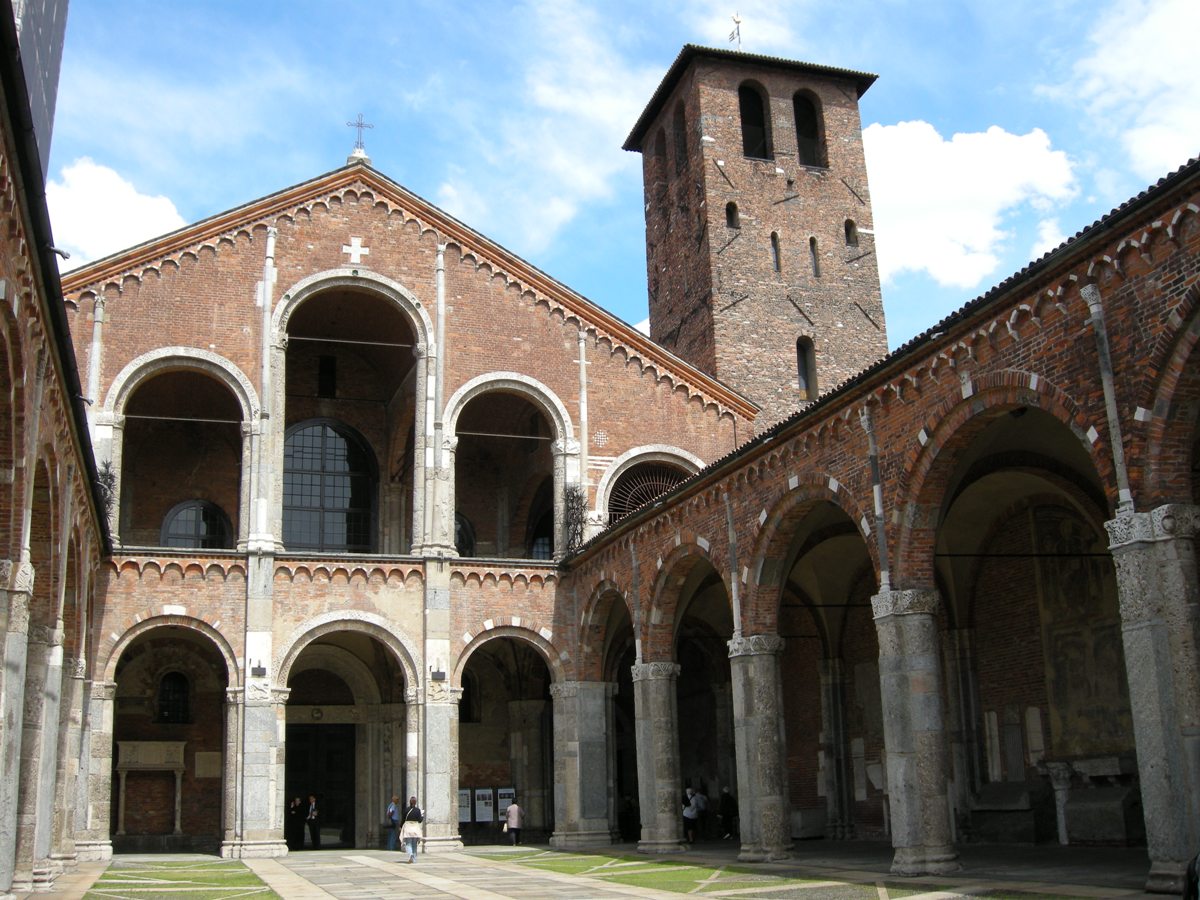
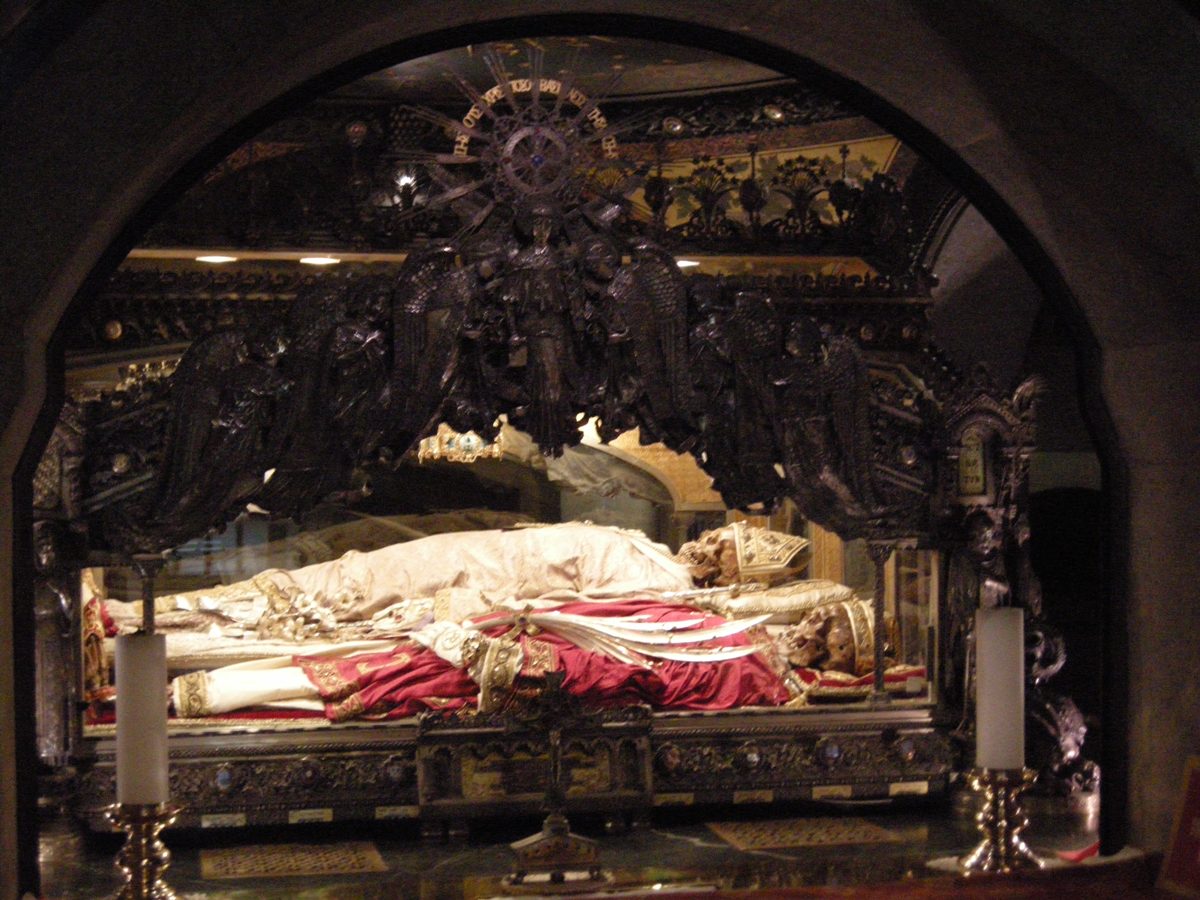
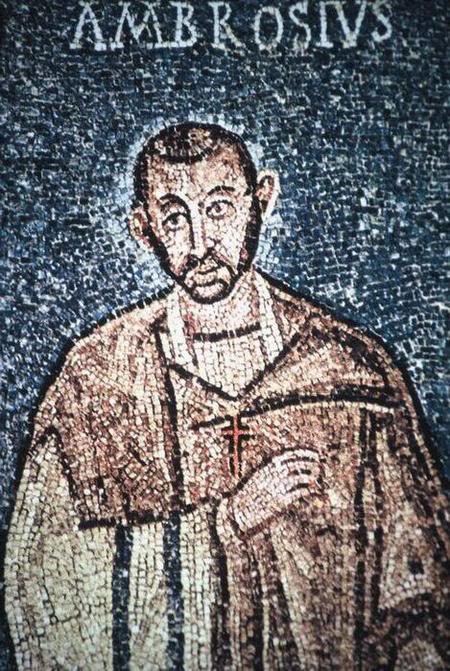
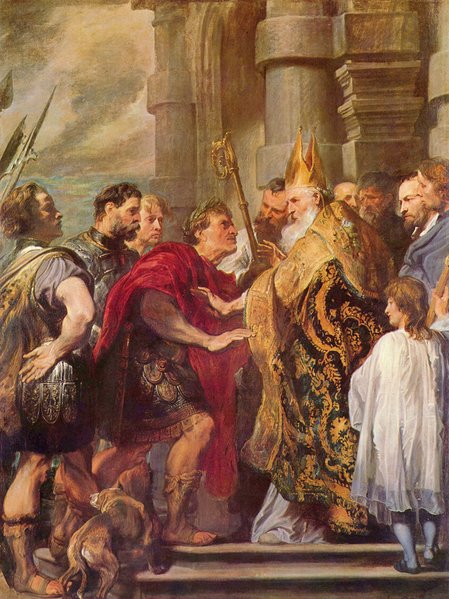
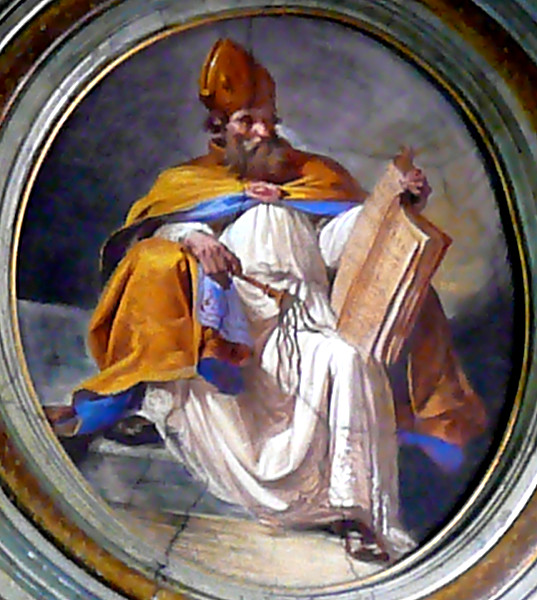
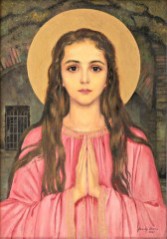
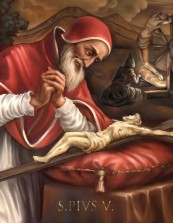
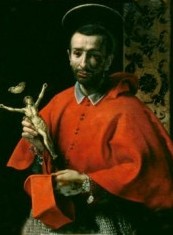
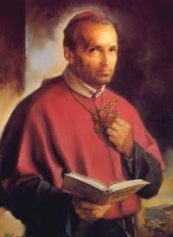
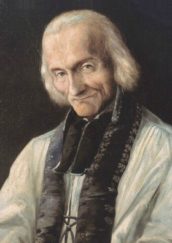
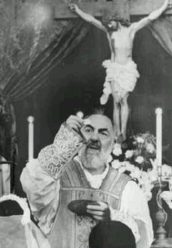
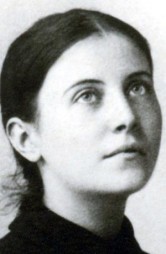
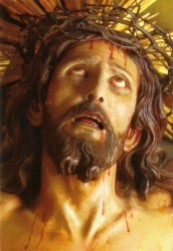
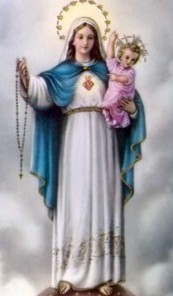
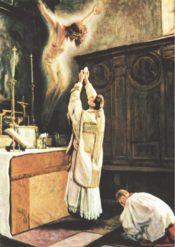
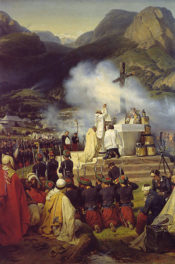
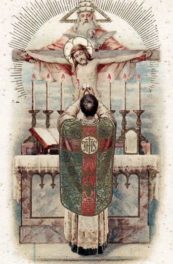
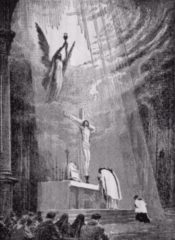
Pingback: Filioque, Part I: The Petrine Office – Between a Rock and a Hard Place
“The golden altar, dating back to the 9th century, depicts the lives of Christ and of St. Ambrose. The magnificent 4th century Sarcophagus of Stilichone, carved with biblical motives, is one of the few pieces preserved from St. Ambroses’s original basilica – a masterful example of early Christian art.”
Do you have a source for this information? Also, do you have any sources for early pilgrimages to this site to see his body? Or sarcophagus?
Is St. Ambrose missing a hand? I am told that here in my hometown Mt. Angel, OR that at our Abbey his hand is preserved behind the altar. I believe I am able to go visit it. But I was just curious to any information you might have. Thank you!
St. Ambrose’s body is at the church in Milan, Italy. What your Abbey has is a relic of the hand of St. Ambrose Barlow (https://en.wikipedia.org/wiki/Ambrose_Barlow) – not the St. Ambrose of Milan who was a 4th century Bishop and Church Father. Your St. Ambrose was a Benedictine monk and priest who was martyred by the Protestants in 17th cent. England. It’s wonderful that your hometown has this martyr’s relics! God bless.